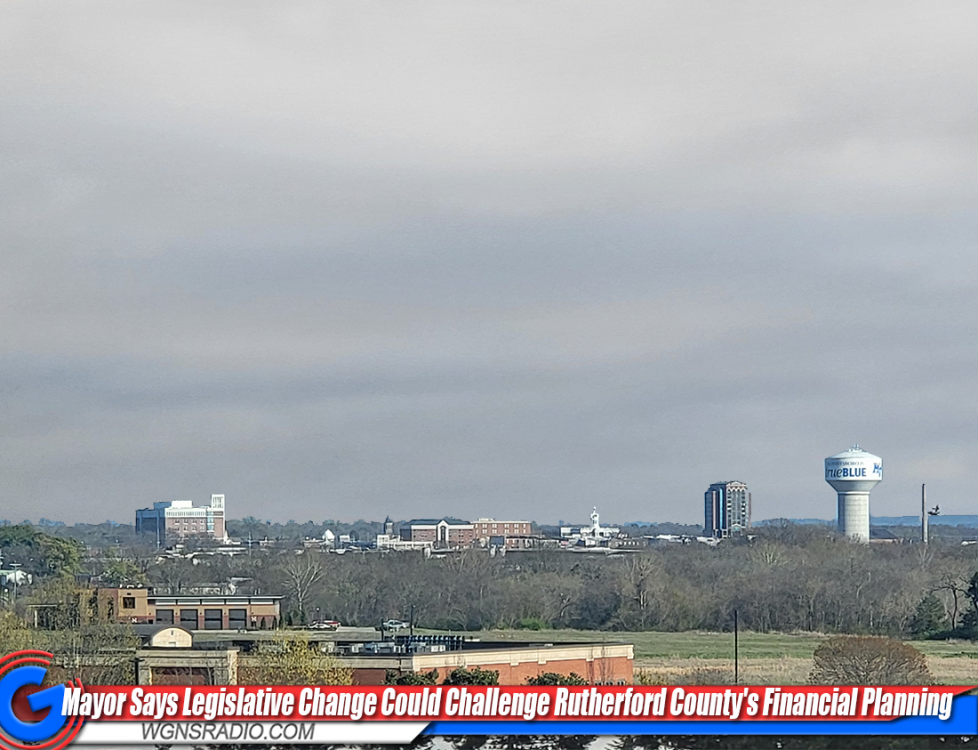Rutherford County, TN - Rutherford County continues to experience rapid growth, and with the passage of Senate Bill 2261 and House Bill 2426 the county can increase the school facilities tax from $1.00 to $1.50 per square foot and impose a $1.50 per square foot tax on commercial buildings up to 150,000 square feet. Rutherford County Mayor Joe Car told WGNS in a statement that this legislative change comes with complications that could impact the county's financial planning.
Mayor Joe Carr released the following statement: The unprecedented growth in Rutherford County continues to be a topic of interest in the community, legislature, and the media. The passage of Senate Bill 2261 and House Bill 2426 will allow Rutherford County to increase the school facilities tax from $1.00 to $1.50 per square foot and add a $1.50 per square foot on commercial buildings up to 150,000 sq ft., but that is not the whole story.
At the beginning of the year, Rutherford County negotiated a deal with some members of the local state delegation and the leadership of local special interest groups, asking for the same authority that Williamson and Wilson counties, along with the cities of Murfreesboro, Smyrna, LaVergne, and Eagleville have to determine how they pay for growth. We had a deal. Due to the intense lobbying efforts, the legislature refused to grant Rutherford County this same authority.
Prior to the recent changes in the legislation, Rutherford County could collect half of the school facilities tax upon the issuance of a building permit and the other half upon issuance of the certificate of occupancy. According to Rutherford County Building Codes staff, the vast majority of builders elected to pay the entire amount upon issuance of the building permit.
Under a different bill that just became law and sponsored by the same interest groups that opposed Rutherford County, the county is prohibited from collecting the school facilities tax until a certificate of occupancy is issued. Construction, in many instances, can take anywhere from 6 to 24 months. This means the total revenue for Rutherford County is delayed by a year or more. For the fiscal year 2024-2025, the county will not gain any new revenue, and in fact will lose the revenue it currently receives under the County Powers Relief Act. According to the Building Codes Department, this bill sets us back by removing an estimated $5-$6 million from the 2024-2025 budget. Because of the change in when the school facilities tax is collected, the county does not expect to be above the 2023-2024 rate of collections until 2026-2027.
Current projections anticipate the new law will result in, at best, $11-12 million total dollars, which is an increase of approximately $5-6 million dollars in new revenue.
Recently, there have been some disparaging remarks about the Rutherford County Commission and the Mayor's Office regarding the budget process and spending policies. The facts show that the county is doing more with less, even with inflation and rapid growth, while still managing a lower property tax rate than most Middle Tennessee counties. Additionally, Rutherford County is one of only three counties in the state that has received the highest bond rating of Aaa. Rutherford County has a conservative, no-frills budget.
In a comparative analysis, according to the US Census Bureau, between 2020 and 2024, the state of Tennessee had a population growth rate of 3%, while during the same period, Rutherford County experienced an 8% growth. Rutherford County's growth rate is approximately 2½ times greater than the state's.
During this same time, from fiscal year 2020-2024, the Tennessee state budget increased by 44.16%, while Rutherford County's budget only increased by 31.92%. Rutherford County controls government spending better than the state.
In the coming 2024-2025 budget year, not only does the county have to make up the difference of the $5-$6 million it is losing because of the changes to the County Powers Relief Act, but we are also losing approximately $11 million to the new charter schools. Under current law, the county provides local funding of about $4,000 per student for education. With the new charter schools, the county will have to pay this $4,000 to the charter schools up front based on each charter school's expected student enrollment. Removing one or two students here or there is not enough of a reduction to reduce the county's public school budget because it is not enough for the county to reduce the number of teachers needed. Additionally, we will be funding students transferring from private/home schools that never generated revenue for Rutherford County schools.
Once again, all that Rutherford County is asking for is that which the Tennessee General Assembly has granted other counties and the cities within the county in determining the best policy for all its citizens in how we are to pay for growth.





